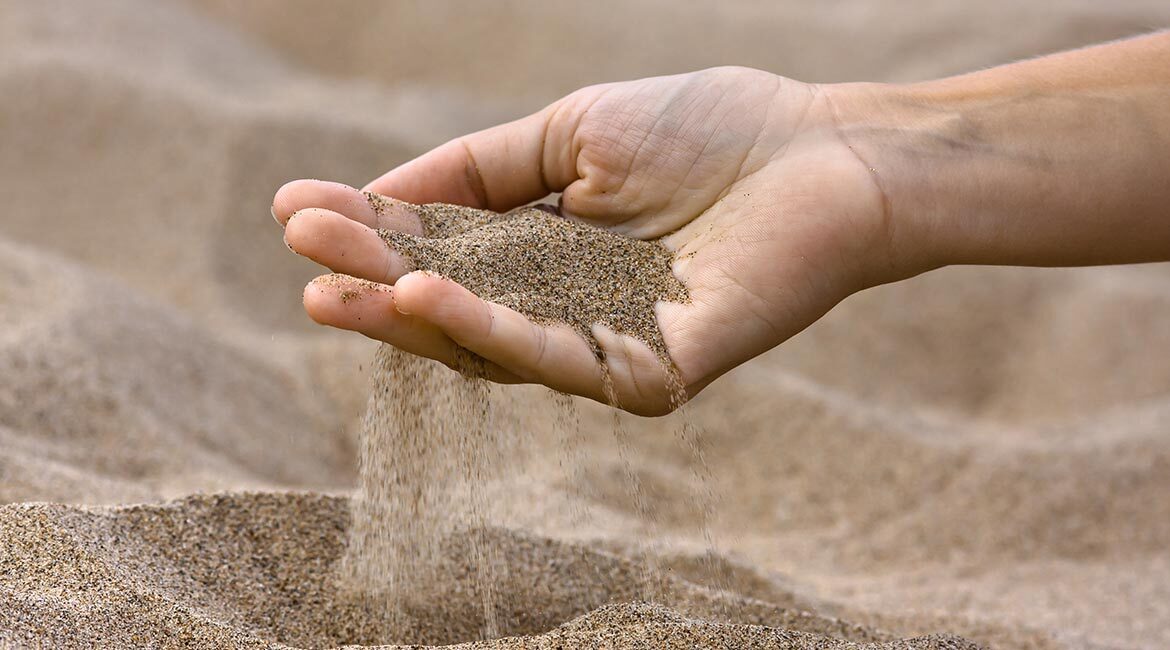
Fascinated by the movement of sand since childhood, Damien Pham Van Bang found it to be fertile ground on which to build his career as a civil engineer. Sand is a fourth state of matter, he claims with enthusiasm. The grain is solid, yet it flows like a fluid, and in very fast and inertial regime, it behaves like a kinetic gas.
Professor of Construction Engineering at ÉTS, Damien Pham Van Bang specializes in erosion and sedimentation processes caused by sand transport. Retreat of riverbanks and shorelines, road and structure collapses, and maritime dune formations endangering navigation are just some of the challenges the engineer addresses.
The Planet Is Changing
Do we absolutely have to protect the 250,000 kilometres of Canadian coastlines that are inexorably eroding? “Impossible, replies Professor Pham Van Bang; we’re talking about investments of around $10 million per kilometre for a total of $2.5 trillion, i.e. twice the amount of the country’s federal debt.”
Damien Pham Van Bang explains the adaptation strategy for a coastal territory based on a rating scale: protect at all costs, accommodate, and setback. We can choose to preserve a biodiversity zone using gentle methods, build houses on stilts in flood-prone areas, or let nature take its course in sparsely populated stretches of coastline.
From France to Quebec
Damien Pham Van Bang’s journey evokes the functioning of a clepsydra. A measure of time that passes in an hourglass. The son of Vietnamese immigrants of modest origin, young Damien developed a taste for education thanks to teachers who shaped his perception of the world. He describes how math teacher M. Giraud used to prepare his entire four-hour lecture on the back of a Paris metro ticket. “Once you’ve understood it, knowledge doesn’t take much space,” Damien says. He dreamed of being like that teacher one day.

Damien obtained his engineering diploma from the École nationale des travaux publics de l’État, and his master’s degree and PhD in civil engineering and mechanics of granular media from the Université Claude Bernard in Lyon. He also received the Habilitation to supervise research (HDR) in fluid mechanics from Université Paris-Sorbonne. As a member of the French Corps of engineer at French Ministry of Ecology, Damien quickly climbed the ladder, too quickly in his opinion. He felt the need for new challenges. His reputation having crossed borders, Damien Pham Van Bang was recruited by the Institut national de la recherche scientifique (INRS) du Québec for a position as professor in 2018. That year, he agreed to be Head of the Environmental Hydraulics Laboratory, dedicated to finding solutions against coastal risks (marine submersion and coastal erosion). Drawing on his expertise in coastal engineering, he proposed new concepts and technologies to reduce the impact of climate change on lowlands.
Research Chair at ÉTS
Having put the Hydraulic Laboratory back on track and ensured its continuity thanks to a competent succession, Damien Pham Van Bang set his sights on a new objective.
He now holds the Marcelle-Gauvreau Engineering Research Chair in Hydraulics and Marine and River Engineering at ÉTS, helping to train future cohorts of engineers and specialists in coastal, marine and river engineering.
Passing on His Passion for Small Things
Professor Pham Van Bang likes to demonstrate that on a small corner of a table, on a small sheet of paper, it’s possible to write down a very simple law that governs an infinite number of mechanisms in our environment.
For example, the movement of a grain of sand can have enormous effects on the scale of a river, a planet or even the Universe.



